Lily Pieper (left) lives with her grandmother (right), grandfather, and great grandmother and plans to continue living there for the next few years. Photo by Claudia Staut
By: Anna Adamson, Kaylie Sirovy, Claudia Staut, & Elias Thomas
The distinctly American norm of graduating college, buying a house and having a family all by the age of 30 has become less achievable, driving 50% of 18- to 29-year-olds to live with their parents, according to the Pew Research Center.
The pandemic led 52% of 18- to 29-year-olds to move back home or remain living with their parents. The numbers post-pandemic have remained fairly consistent- and the pattern becomes more normalized.
Despite a negative stigma depicted in movies and TV shows of ‘the young adult living in their parents’ basement’, public opinion of young adults who chose to live at home is mixed- and varied based on gender and class.
Affordability, convenience and necessity are all contributing factors for young adults choosing to live at home.
“Less pressure to follow a linear path”
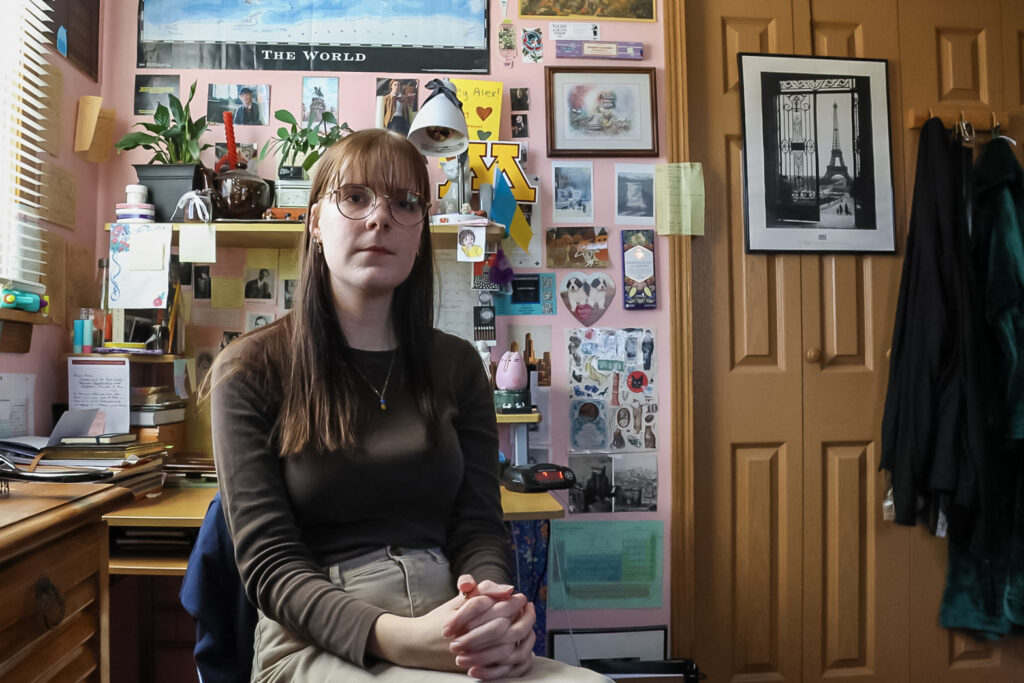
The walls of third year University of Minnesota journalism student Alexandra DeYoe’s childhood bedroom are nearly covered with postcards of European cities, family photos and even a deck of playing cards individually taped to the side of her bookshelf. DeYoe, always an accomplished student, hung various academic awards in the space behind her desk, along with a golden-yellow paper in the shape of the University of Minnesota’s iconic “M”.
However, calling DeYoe’s room her ‘childhood bedroom’ is inaccurate.
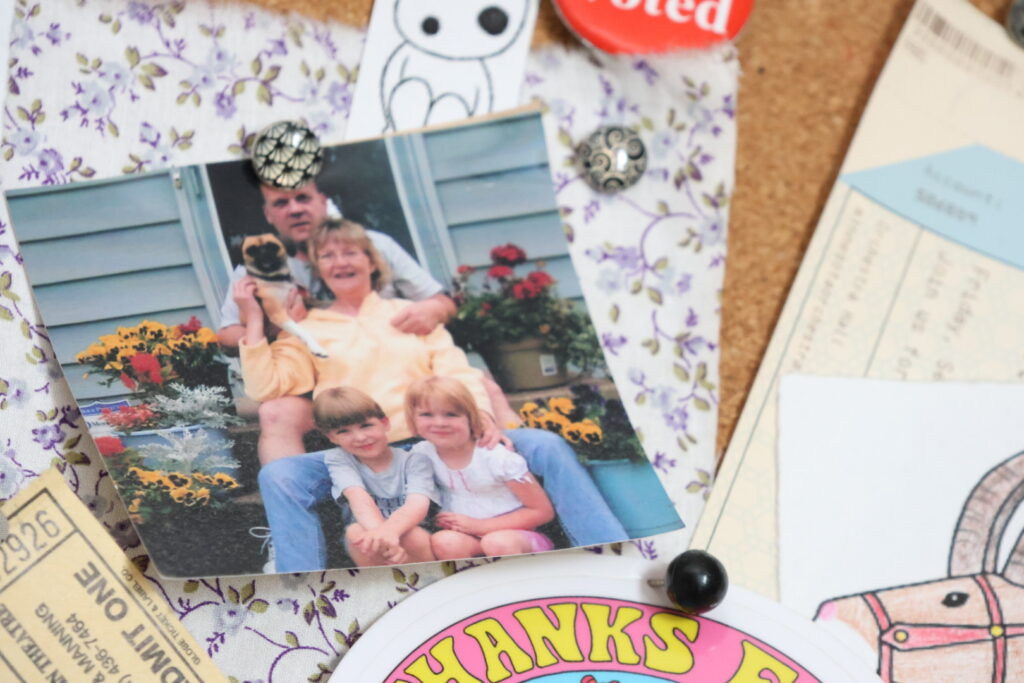
Aside from spending her first year at the University in the dorms, DeYoe has always lived in that room at her parent’s house. Though her decision was partially to save money, above all, DeYoe wanted to be near her mother, who has multiple sclerosis, a chronic condition that impacts her mobility and some cognitive abilities.

DeYoe’s mother speaks slowly, often slurred because she also has aphasia, a brain disorder that affects her ability to speak. Last July, DeYoe’s mother had a stroke which halted her ability to drive, cook or clean.
DeYoe has heavily reflected on her identity as a college student living with her parents. Last year, she even wrote an article, that drew on her experience as a caregiver for her mother.
Her mother depends on the help of her family to start and end her day. Since she uses a walker to get around, DeYoe wakes up before her to help her out of bed. In the evenings, DeYoe, her brother or dad make sure she gets her medication and brushes her teeth.
“I used to depend on her for a lot of things. Now she depends on me for a lot of things, which is a little weird to feel when you’re like 21. You kinda expect that when you’re like 45, 50 when your parents are like 90 years old, when my mom is just 61,” DeYoe said.
Caregiving proved to be second nature for Deyoe. When she was about eight-years-old, she noticed how her family came to her side when her grandmother’s health was failing.
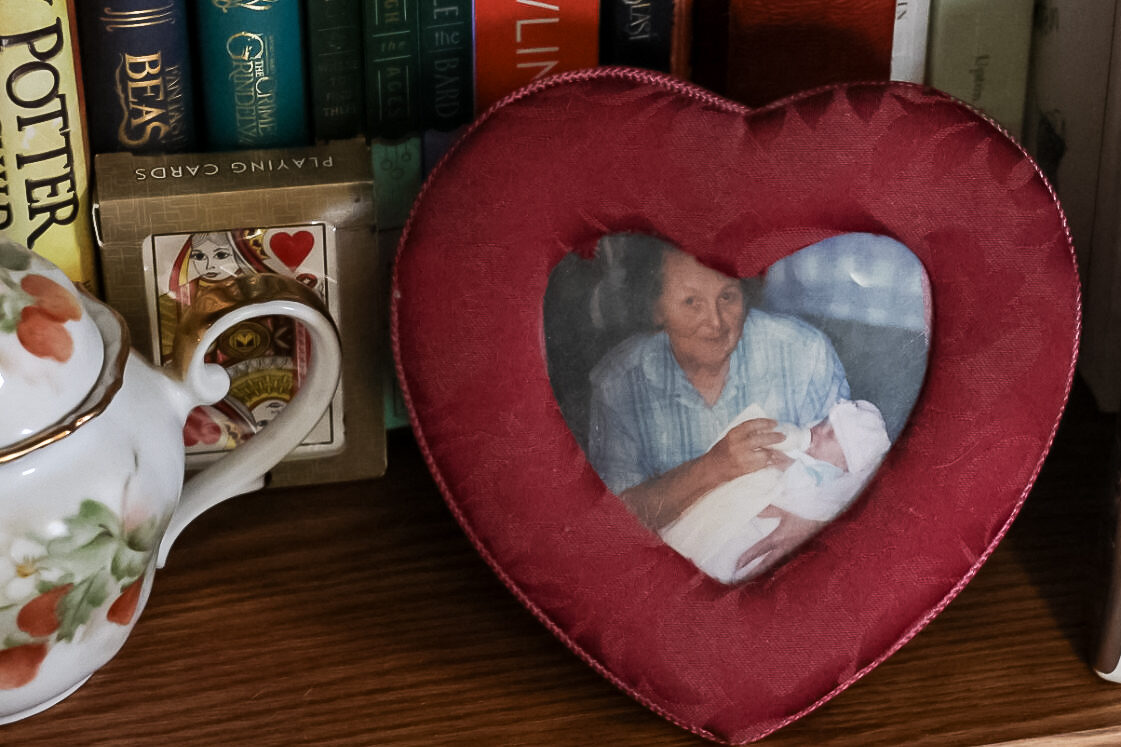
“I saw my mom and all her sisters and brothers take care of her. So it was kind of like, oh, that’s what you do,” DeYoe said.
“That’s like the bulk of why I stay at home.”
“Not even like for the affordability part. That’s kinda like a perk to me at this point. It’s mostly just to take care of her because I know she’s most comfortable with me as another woman taking care of her instead of like my dad or my brother,” DeYoe said.
For Lily Pieper, moving back home wasn’t part of the plan, but it also wasn’t a defeat. After graduating from Bradley University with a degree in English and Women’s and Gender Studies, she found herself living in Chicago and juggling a demanding job with rising rent. When a breakup made her housing situation unaffordable, she chose stability over struggle. She packed her bags and moved in with her grandparents and great-grandmother in Woodbury, Minnesota.
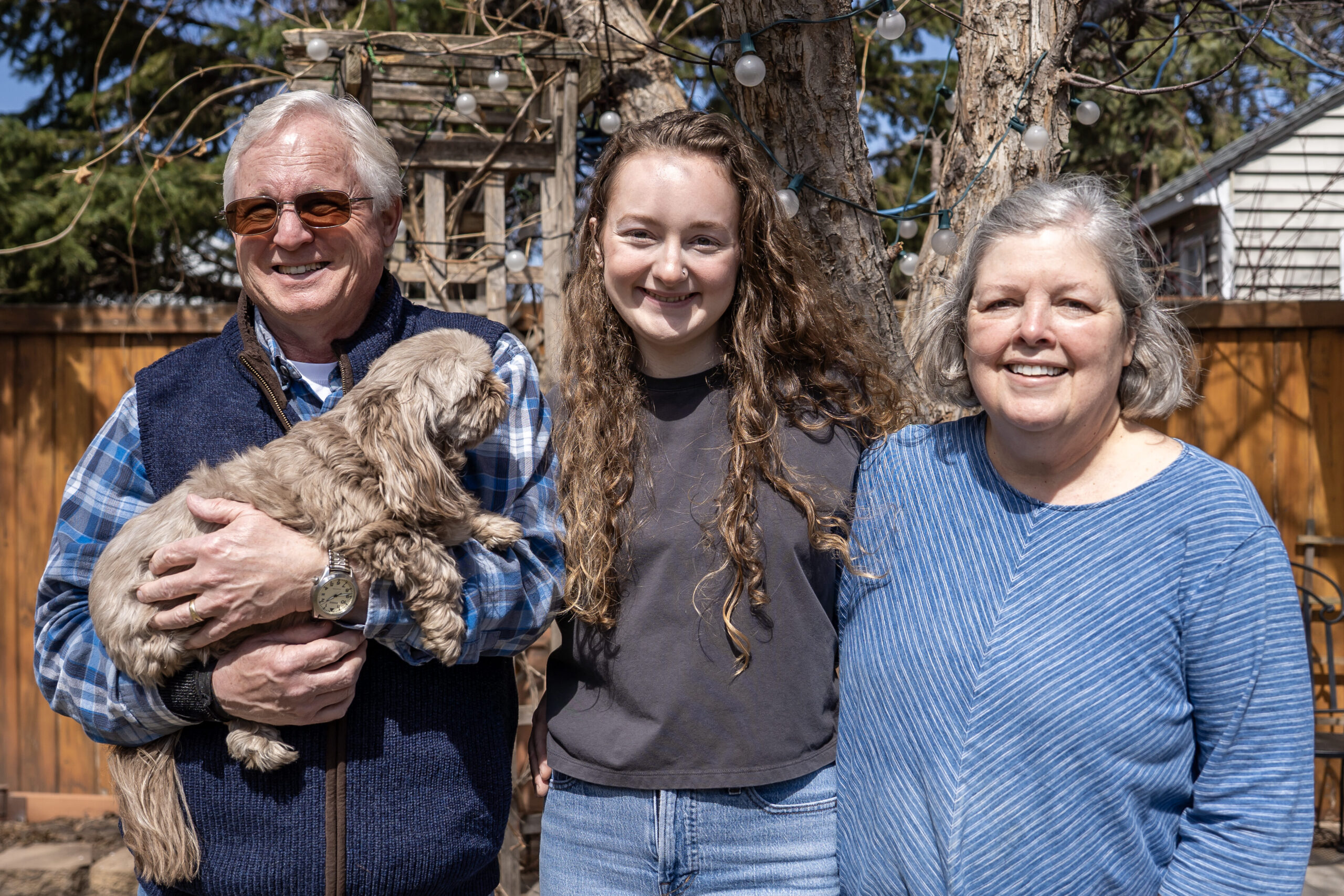
A few years ago, that might have felt like a step backward. Today, it’s just one of many practical paths that young adults are taking as they navigate a shaky economy with increasing rents and changing social values.
“There’s a kind of misconception that your independence is lost when you live at home,”
“But for me, it’s been really grounding. I get to spend more time with my family, and I’ve actually felt less isolated than I did living on my own.”
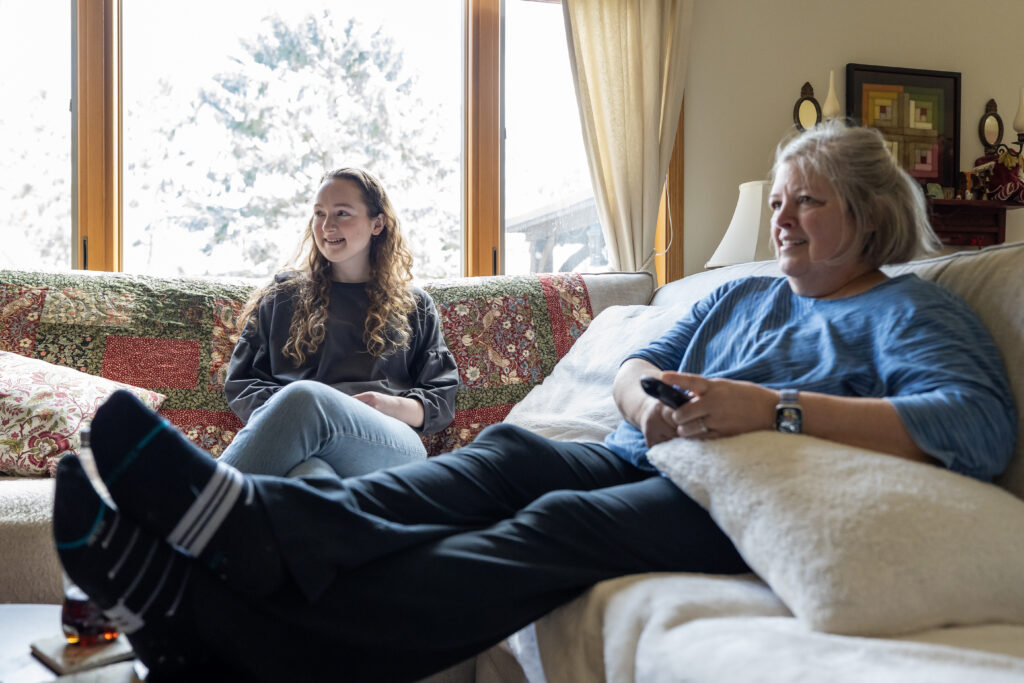
Her daily life is full, but not frantic: job applications in the morning, coaching high school speech and debate in the afternoons, family dinner in the evening. She and her grandma have bonded over TV shows like The White Lotus, and she watches sports with her grandpa, a dedicated WNBA and Vikings fan.
Where earlier generations might have viewed moving back home with family after college as a sign of failure or dependence, today’s young adults are embracing it as a smart, sustainable decision. Many of Pieper’s friends are doing the same, some with parents, others with siblings or extended family. And far from facing judgment, she said people often express admiration for the support network she has.
“I think people understand more now,” Pieper said. “The economy isn’t great, and most of us are trying to find our footing. There’s less pressure to follow a linear path, like getting married or buying a house right away.”
American Individualism at its Finest
The shift of more people living at home highlights a racial gap: Asian, Hispanic and Black young adults are more likely to live in a parent’s home than their white counterparts, according to the Pew Research Center.
“Some reasons might have to do with social class and how social classes correlated with race in our country, and some reasons are likely to do with the commonality or the feeling that it’s normal to live in a multi-generational home, particularly for immigrant families,” Teresa Swartz, assistant professor of sociology at the University of Minnesota who specializes in intergenerational relations, said.
Multi-generational homes -defined as three or more generations under one roof- accounted for 4.7% of all households in 2020, up from 3.7% in 2000, according to the U.S. Census Bureau.
That increase in multigenerational living is partially because groups that account for most recent overall population growth in the U.S -Asian, Black and Hispanic Americans- are more likely to live with multiple generations under one roof.
Though multigenerational living has increased among white Americans in recent years, men, white adults and those in upper-income households were more likely to say it is a bad thing that more young adults in the U.S. are living with their parents, according to a 2021 survey from the Pew Research Center.
“I think that idealized vision of young adulthood in the early 20s -breaking away from your parents, becoming independent- is related to American individualism and the American dream.”
“And it was bolstered by an economy that allowed for it,” Swartz said.
But when the economy doesn’t allow for the American individualist goal of moving out of the parents’ home, the data shows more young adults choose to stay home. Unsurprisingly, the economy and stigma of living at home go hand-in-hand.
For many young adults, Swartz said, current economic conditions don’t support them living independently. Similar patterns took place during other economic shocks like the 2008 financial crisis, the Great Recession and the pandemic. High home prices and mortgage interest rates have forced first-time buyers to stretch their budgets, or even, move in with a family member.
1 in 10
The approximate amount of homeowners who paid more than 30 percent of their income on housing costs in 2023, according to research from the Harvard Joint Center for Housing Studies.
$1,632
The median monthly apartment rent for a 2-bedroom apartment in Minneapolis, making the it the #52 most expensive large city in the U.S., according to 2025 data from the Apartment List.
“I would say like 80s, 90s, 2000s, that stigma was still pretty strong. The image of the slacker of the Generation X of the 1980s becomes kind of well known. It becomes kind of like a stereotype of a failure towards the American dream.”
That stereotype, however, seems to be changing with the rise of young adults living at home. DeYoe found that when she tells people she lives with her parents, they tend to understand.
Listen here: Similar to DeYoe’s experience, Pieper’s friends and family were generally understanding of her choice to move home, with one exception
“Whenever I would tell people that, they’d be like, oh, you probably save a lot of money. And I was like, yeah, I do actually. Thank you for mentioning that.”
$15,090
The estimated amount saved annually by young adults who continue living at home in 2025, as opposed to their counterparts who move out, according the Federal Reserve (adjusted for inflation.)
DeYoe has occasionally felt left out from her college peers in terms of nightlife and achieving the so-called college experience. After moving back home with her parents, she noticed a difference in where she made friends. Rather than heading to the library in the evening with someone from the dorms, her friends now are mostly from the newspaper- where she works as a reporter.
“I’m a very introverted person in general. So I’m not super concerned about having a bunch of friends or anything like that. If anything, it’s made hanging out with people harder because you really have to schedule your time out.”
Even so, she said the lack of proximity to peers has made her friendships closer. Ultimately, choosing to live at home shouldn’t be stigmatized, she said.
“I would say there’s a lot of different reasons to live with your parents, whether that’s financially or because your parents need it, for their health, or whether you need it for your health. It’s a very individualistic decision to make. And it’s not really based on -it shouldn’t be based on- what other people think.”
A New Norm
The traditional “American Dream” i.e. owning a home, achieving financial independence by your mid 20s, is being reimagined. Pieper, along with other young adults living at home, believes young people today are more focused on balancing personal growth with financial realities, even if that means letting go of old benchmarks.
And while living with family isn’t without its challenges, “my family is very nosy,” Pieper laughed. She sees far more advantages than drawbacks. Beyond just saving money, she appreciates the shared meals and the chance to be there for older loved ones.
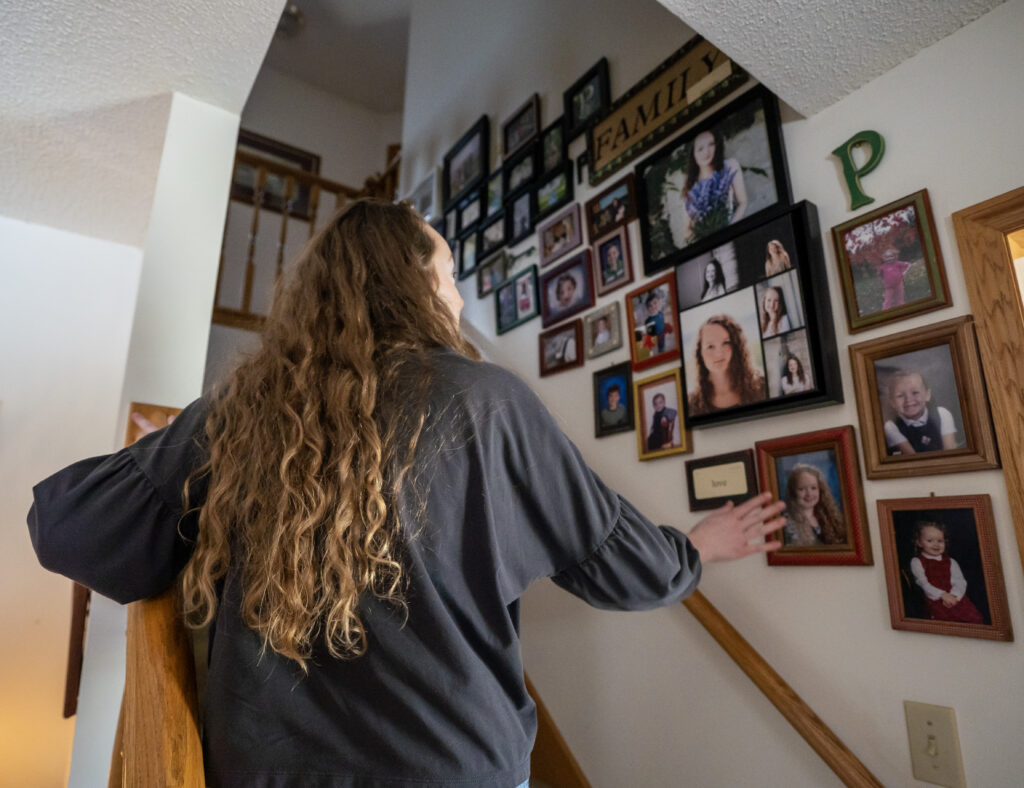
“It’s not for everyone,” Peiper said. “ You need to have a good relationship with your family, and for some people, that’s not possible or healthy. But if you do have that support, it can be a really positive and productive experience.
According to Pew Research Center, 82% of young adults said they have at least a good relationship with their parents. For those who don’t have a good relationship with their parents, Swartz said living at home may not be an option.
“Some people don’t have families that they could count on,” Swartz said. “Then for other people, it wouldn’t necessarily be a good thing for them to have to stick with families that maybe have problems that they can’t address in a healthy way.”
Swartz also noticed positive changes in the social relationships of people who live with family.
“People are changing their relationships from the child/parent relationship to a more peer relationship,” Swartz said. “So I think those bonds are getting stronger and more social in a different kind of way than they were before.”
DeYoe has felt that change with her mom as she has developed a new duty as caregiver: being a friend.
“My mom really needs me,” DeYoe said. “Not even just in a taking care of her way, but we’re just best friends and so I’m like the person she always wants to talk to and stuff like that.”
As more young adults opt to stay home longer, the stigma surrounding it continues to fade. And with voices like DeYoe and Pieper showing that it’s possible, the narrative is changing.
“I don’t think it’s a bad thing or a hindrance to have a little bit of help sometimes,” Pieper said. “Especially if you have people in your life that are very willing to offer it and very open with that support, I don’t think that that really can ever be negative, you know?”
